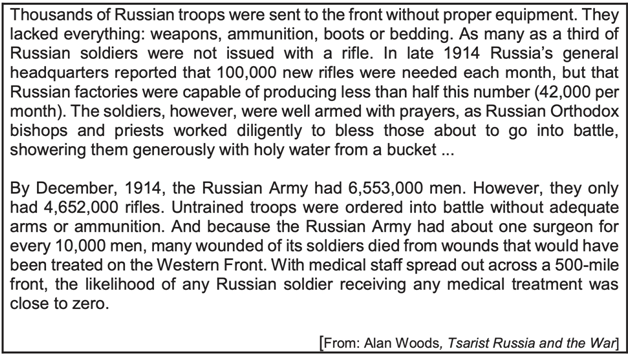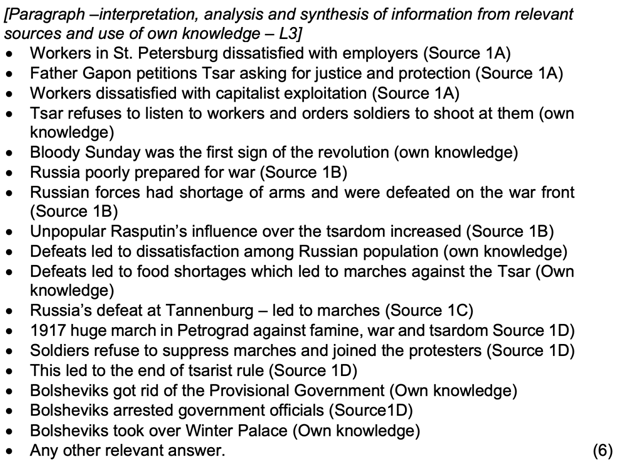General Tips when answering Source-based Questions:
- When approaching a source-based question, look at the MARK ALLOCATION of the question. It will indicate how many facts/pieces of information you should use, as well as how many marks you will receive per ‘fact’. For example, a question that indicates (3x1) means that you should list 3 facts and that each correct fact will give you 1 mark. Therefore, if you answer the question correctly, you will receive THREE marks in total.
- When mark allocation indicates that you will receive 2 marks per fact (e.g., 3x2), it means that your answers should be a bit longer. For example, you can list your fact, but you should also give a short and correct explanation. Refer to some questions below as an example.
- Always identify what your question is asking of you to do. For example, the word ‘list” indicates that you may use bullet-points to answer your question. The word quote means that you MUST directly quote (“”) the correct answer for the source that is provided to you.
- Visit our website’s “History Classroom Technical Skills” resource pack for more useful tips to ace your assignments and examinations.
Source A:
 This source deals with Russia’s participation in the First World War.
This source deals with Russia’s participation in the First World War.
1. Why, according to the source, was Russia ill-equipped for the war? (3x1) (3)
- They lacked weapons
- They lacked ammunition
- The lacked boots
2. Use the source and your own knowledge to explain the outcome of Russia’s participation in the First World War. (2x2) (4)
Russia’s participation in the war led to severe food shortages in Russia. This in turn led to many Riots against the Tsar in Russia.
Or
Russia’s participation in the war led to many people criticising their government. Eventually, this meant that the Tsar was forced to abdicate.
3. Define the following words: (2x2)
- Revolution: A complete overthrow of the existing dominant system by the working class for a new alternative system.
- Stalinism: The policies adopted by Stalin in the pursuit of communism largely based on totalitarianism and centralisation.
4. Who encouraged working women to join the strike in Petrograd? (1x1) (1)
The Petrograd Bolsheviks
5. Who/What were the Bolsheviks? (3x1) (3)
The Bolsheviks were a far-left faction formed in 1912. The Bolsheviks were founded by Vladimir Lenin and Alexander Bogdanov. This faction played an extremely role in the Russian revolution of 1917.
6. In a paragraph of about SIX line (about 60 words), explain the causes of the Russian Revolution of 1917. (6)
During the early 20th century (1900’s), the Russian workers felt exploited and were dissatisfied with capitalist exploitation. Although this dissatisfaction was relatively clear, the Tsar refused to listen to the Russian workers and ordered soldiers to shoot at them. Bloody Sunday was one of the first signs of the Revolution. Russian defeat in the First World War led to significant dissatisfaction under the Russian population. These defeats also led to a large food shortage throughout Russia. Russian soldiers refused to suppress the marches against famine and even decided to join these marches.
 Here is an extract from the memorandum of the 2019 Grade 11 November history exam. Image Source
Here is an extract from the memorandum of the 2019 Grade 11 November history exam. Image Source
This content was originally produced for the SAHO classroom by
Sebastian Moronell, Ayabulela Ntwakumba, Simone van der Colff & Thandile Xesi.
[1] National Senior Certificate.: “Grade 11 November 2018 History Paper 1 Addendum,” National Senior Certificate, November 2018.